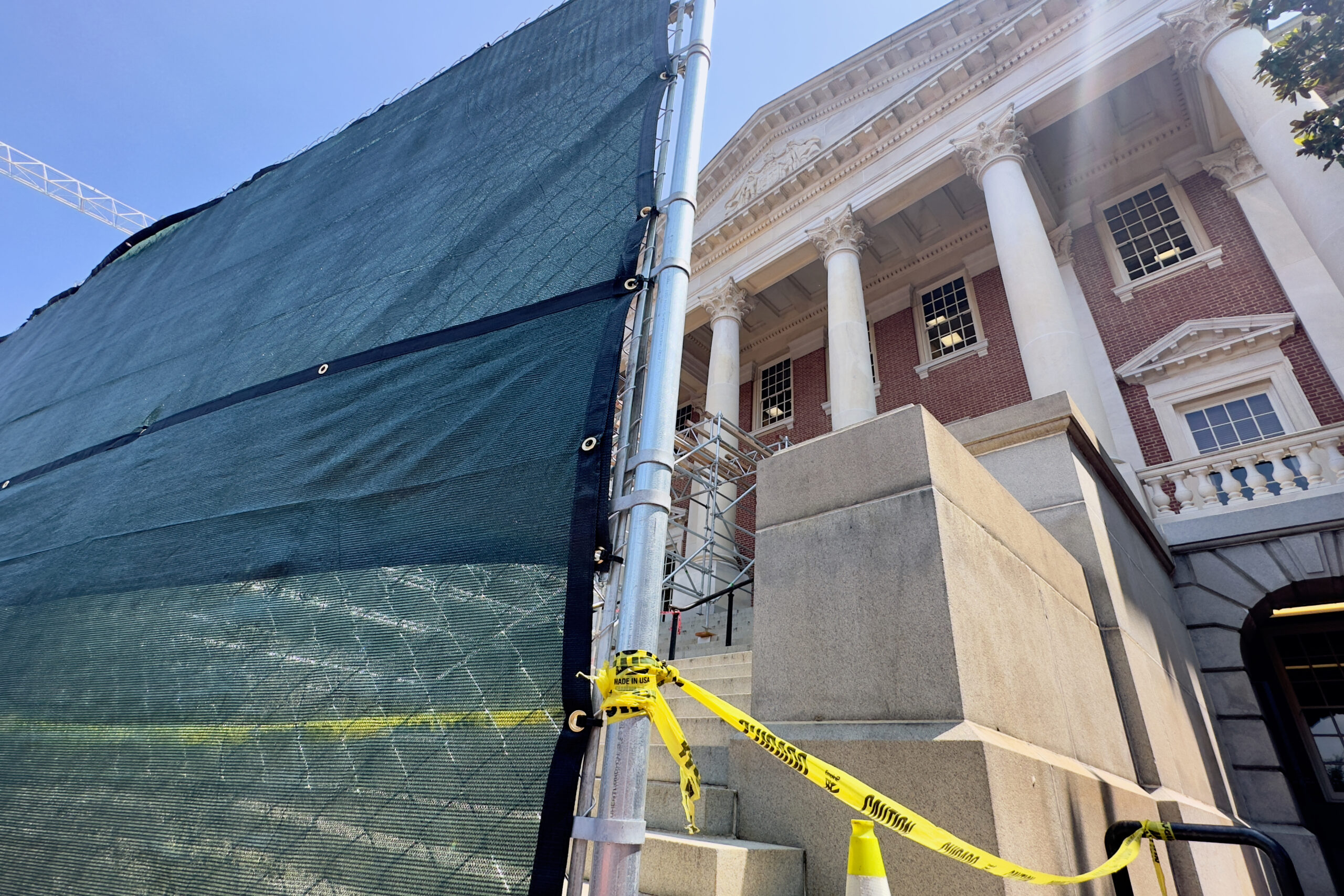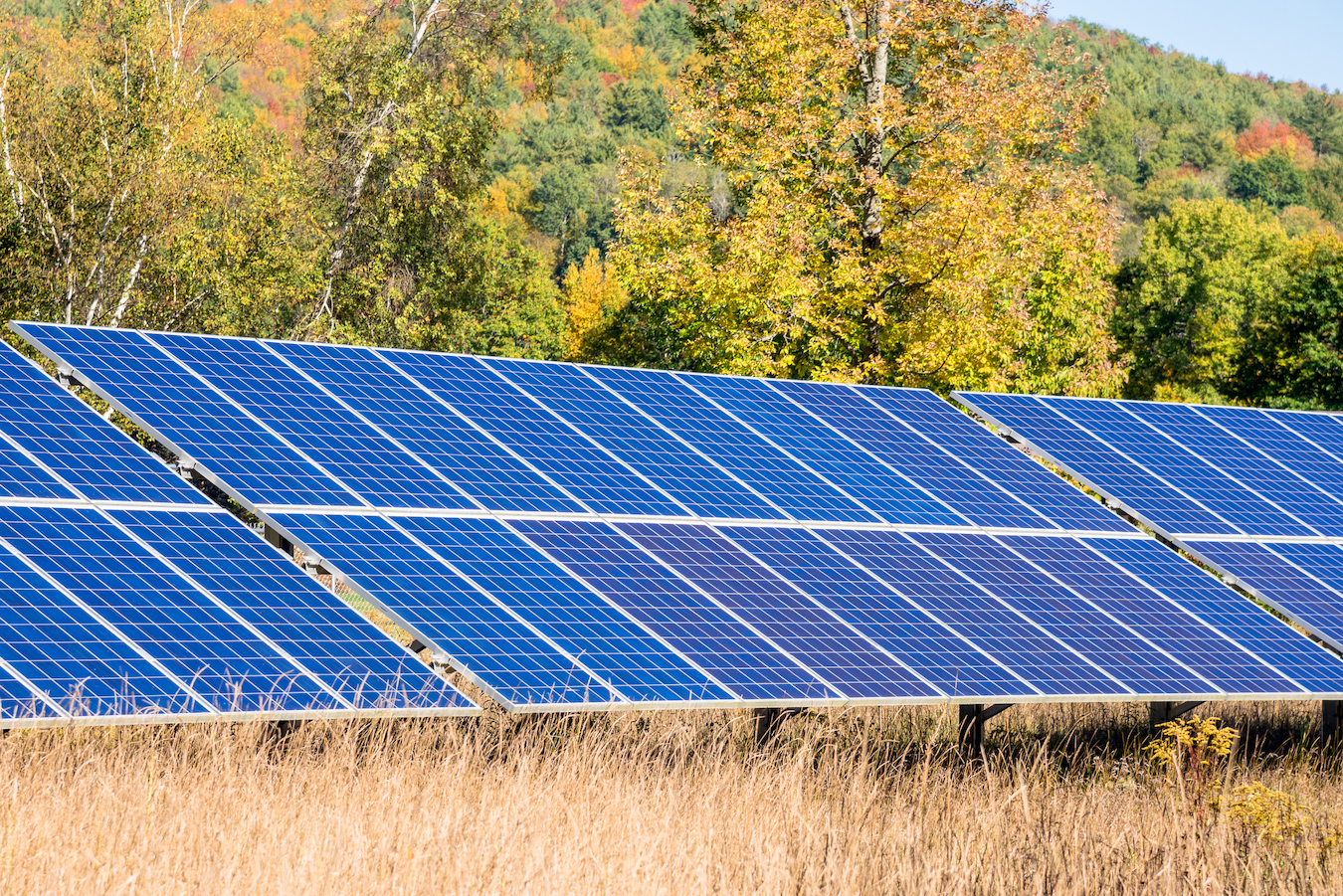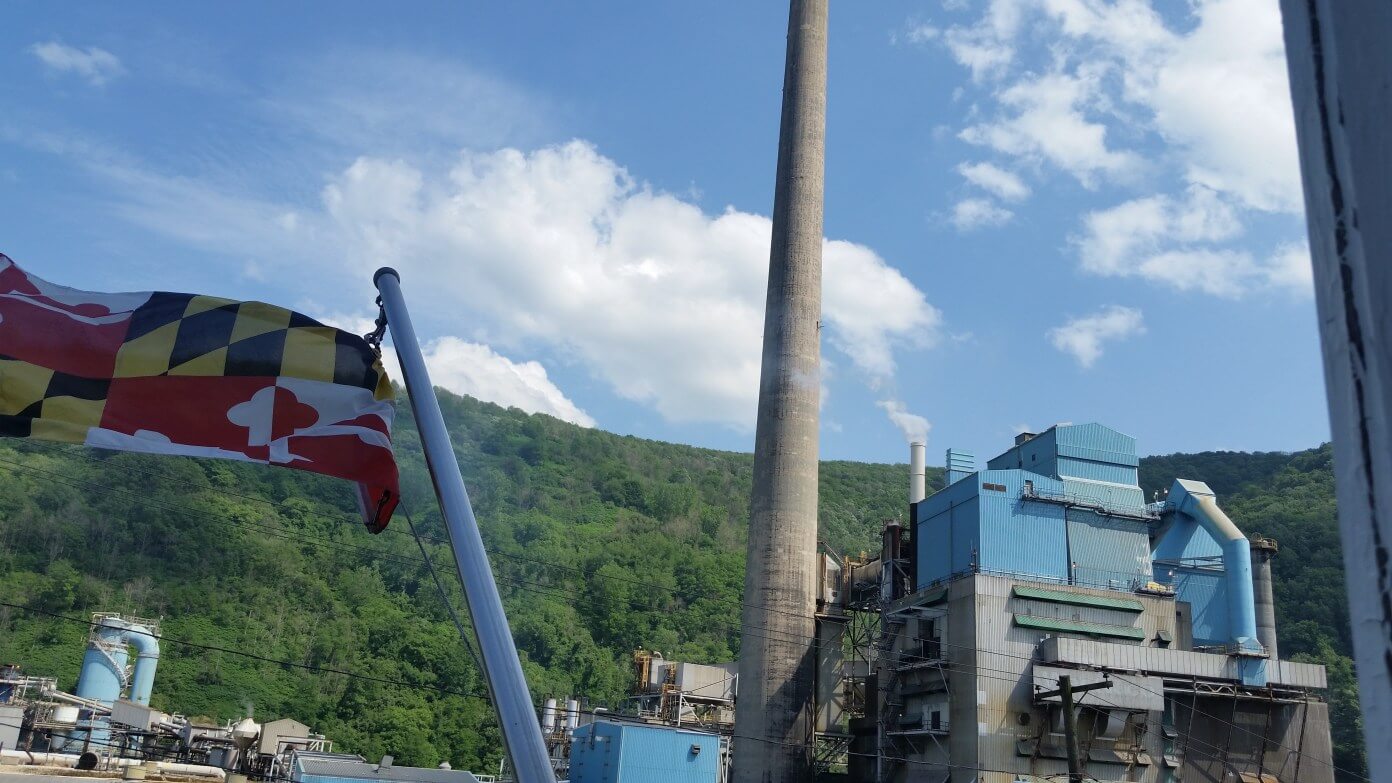Guest Commentary: Reforming Md.’s Renewable Energy Law
Maryland’s General Assembly will make some crucial decisions this session on the future of the state’s Renewable Portfolio Standard.

Tim Whitehouse
Currently, the legislature is considering two bills to increase the amount of renewable energy that utilities must purchase under the state’s RPS. The RPS is the primary law that requires Maryland utilities to purchase renewable energy or renewable energy credits to reduce the state’s dependence on electricity produced from fossil fuels and to diversify our energy mix.
Chesapeake Physicians for Social Responsibility supports only one of these bills, the 100% Clean Renewable Energy and Equity Act, because it is the only bill that would reform Maryland’s Renewable Portfolio Standard law. Our review of a January 2018 Public Service Commission report on the RPS indicates that a significant overhaul of Maryland’s RPS is necessary. We reach this conclusion despite being strong supporters of the RPS in the past.
Our main concern is that Maryland’s RPS allows utilities to buy “unbundled RECs” from a geographic area that encompasses about one-third of the U.S. An unbundled REC means the utility buys only the certificate, not the underlying energy.
In 2016, these RECs accounted for up to 80 percent of Maryland’s Renewable Portfolio Standard. Unbundled RECs do little to address the state’s dependence on fossil fuels, impose unnecessary costs on Maryland ratepayers and are used to make Maryland’s energy mix look is greener than it is.
The exception to this practice of purchasing unbundled renewable energy credits is the in-state solar and offshore wind in the RPS. However, by 2020, under the current RPS, solar and offshore wind will account for no more than 5 percent of the Renewable Portfolio Standard. Under a new bill introduced to raise the RPS to 50 percent, the use of unbundled RECs in Maryland’s RPS will continue to grow at a rapid pace, while in-state solar and offshore wind requirements grow far more slowly than they would under the “100 percent bill.”
What Is a Renewable Energy Credit?
A REC is a document that certifies one megawatt-hour of electricity was generated from a renewable energy resource as defined by Maryland law. Maryland’s current RPS requires utilities to purchase renewable energy credits equal to a percentage of their energy sales. Under the RPS, utilities must derive 25 percent of their electricity from renewable sources by 2020.
Renewable energy credits are bought and sold like commodities, and their prices are set on the open market. In 2016, the average non-solar REC price was in the Maryland RPS program was $12.53.
RECs can be either bundled or unbundled. A utility that sells renewable energy can “bundle” the electricity and the REC together. That means the buyer gets both the energy and the REC. Once a REC is bought and used toward an RPS, it must be retired, meaning that it cannot be used again.
If the energy and RECs are “unbundled,” the developer can sell the electricity to one utility and the REC to another – and this is generally the case. That allows an North Dakota wind developer, for example, to sell its electricity to a local utility in North Dakota, but the REC to a utility in Maryland. The Maryland utility can then use the REC to count toward Maryland’s RPS requirements.
Where do these out-of-state RECs come from? About 38 percent came from West Virginia, Pennsylvania and Virginia. Over 40 percent came from states outside of Maryland that are not even contiguous to the state. Many come from as far away as North Dakota, Missouri, Tennessee and Illinois.
Maryland ratepayers pay tens of millions of dollars per year for these unbundled RECs without any guarantee that any additional clean energy is being added to our grid, or any grid, for that matter.
Because the Public Service Commission does not in its annual report release the costs of individual renewable energy credits purchases, the buyers of the RECs, or whether the utility purchased any energy with the REC, we do not know exactly how much Maryland ratepayers paid for unbundled RECs. However, we know that in 2016 Maryland utilities paid over $135 million for more than 9 million RECs. About 80 percent purchases were from outside of Maryland, many from installations that were already producing electricity and selling it to their local utilities.
To make matters worse, Maryland’s RPS does not require that energy sources be new. That means, for example, that if a Maryland utility buys unbundled RECs from a hydropower plant or a wind farm, these RECs will show up as a new source of renewable energy in Maryland’s RPS, even if they are not.

Chesapeake Physicians for Social Responsibility supports the 100% Clean Renewable Energy and Equity Act.
Other states do not allow these types of shenanigans.
New York’s new 50 percent RPS, for example, limits almost all new renewable energy credits purchases to resources that came into operation after Jan. 1, 2015, and has strong in-state requirements. Likewise, Illinois requires that the energy source come from within the state, or adjacent states, if it is in the public interest.
In reviewing the Public Service Commission reports over the past 10 years, it has become clear that many of Maryland RECs are doing little – if anything — to increase our renewable energy production. Instead, our purchases of these renewable energy credits are likely rewarding existing out-of-state renewable energy producers and their parent companies with some short-term revenue.
Below are some examples to highlight this point. In these examples, the utilities, companies and brokers who are buying and selling these RECs are doing what the law allows them to do. These are not examples of bad behavior by the companies; they are examples of why the way we buy renewable energy under the RPS needs to be changed.
Not New Clean Energy
Maryland’s RPS allows the purchase of renewable energy credits from small-scale hydropower. Between 2007 and 2016, the number of RECs purchased from small-scale hydroplants for Maryland’s RPS increased over 2,500 percent, from 54,414 to 1,450,307, for a total of just over 7,300,000 RECs during this 10-year time period.
At first glance, this would appear to be a great success story in Maryland’s RPS.
In reality, Maryland ratepayers probably got very little energy for their investment. Between 2007 and 2016, capacity and generation from small hydropower facilities have remained relatively steady both regionally and nationally. Many of the dams that generate RECs for Maryland’s RPS are far removed from Maryland’s electrical grid and have been producing hydropower for decades, some for over a century. In 2016, only two of these projects were in Maryland, accounting for just 2.2 percent of the renewable energy credits purchased from small hydropower facilities. Thirteen were in Virginia, five in West Virginia, five in Pennsylvania, 10 in New York, one in New Jersey and three in Illinois.
Here are examples of the problem with the use of unbundled renewable energy credits for small-scale, out-of-state hydropower.
- Over the years, one or more Maryland utilities has purchased RECs from a series of small, historical dams along the Black River in upstate New York. These dams sell power into New York’s electrical grid.
- In 2016, a utility purchased 16,983 RECs from energy produced by the Lockport Powerhouse Dam outside of Chicago. This transaction appears to be the first time that a utility bought RECs from this dam to meet its Maryland’s RPS requirements. The dam, built in 1907, produced 35.6 million kWh of electric power and generated $990,097 in revenue in 2016.
Onshore wind is another important part of Maryland’s Renewable Portfolio Standard. In 2016, onshore wind accounted for about 30 percent of Maryland’s Tier 1 RPS. Like hydropower, wind would appear to be a great success story of Maryland’s RPS. The number of wind RECs in Maryland’s RPS has grown from zero in 2007 to 2,339,596 in 2016.
Where did these RECs come from? In 2016, almost one half came from Illinois. Twelve percent came from North Dakota, 11 percent from Pennsylvania, nine percent from West Virginia, almost 7 1/2 percent from both Missouri and Iowa, 2 percent from Indiana, and close to 1 percent from Maryland and Ohio.
Many of these renewable energy credits come from wind farms that have been producing wind for many years.
Take the Tatanka Wind Farm in North and South Dakota that went online in 2008. In 2016, a Maryland utility purchased 282,055 RECs from the wind farm to meet the state’s RPS obligations. Or the Farmer City Wind Farm in Missouri, which came online in 2009. In 2016, a Maryland utility bought 171,742 RECs from this wind farm.
Both of these wind farms are subsidiaries of larger international corporations. It is fair to ask why Maryland ratepayers are subsidizing the Midwestern assets of international corporations, especially when the price of wind from large developments in the Midwest is equal to or lower than the price of electricity from fossil fuels.
In other words, these wind farms are being built because market forces in that region already favor wind development. Why are Maryland ratepayers paying for this instead of incentivizing new clean energy closer to home?
Not New Dirty Energy
One problem with Maryland’s RPS – that has been extensively reported on — is that Maryland’s RPS allows utilities to purchase RECs from facilities that that burn trash, biomass, pulp and paper, and other energy sources that are as bad or worse for human health and the climate than burning fossil fuels.
In 2016, almost half of Maryland’s RPS came from these high-polluting energy sources.
Although we believe these types of fuels should not be in Maryland’s RPS because they are not clean, renewable energy, a less obvious, but as serious a problem is that we may not be getting any return on our investment.
Take the burning of biomass. Biomass is the burning of wood waste as an energy source. In 2016, the burning of biomass accounted for 7.4 percent of Maryland’s renewable portfolio standard. Facilities selling credits to Maryland were in Tennessee, Kentucky, North Carolina, Virginia and North Carolina.
One Kentucky company sells credits from a biomass co-generation plant on the site of its mill. The co-generation facility has been in operation since 1994. The plant burns wood waste to produce steam and electricity that is used at the company’s facility. The excess electricity is sold to East Kentucky Power.
Looking at the PSC reports, it is difficult to tell a lot about these biomass facilities. But the Kentucky plant is probably not an isolated example. It is quite likely that other plants use or want to use biomass as cogeneration at their facilities.
Black liquor is another example of this problem. Black liquor accounts for 23.4 percent of Maryland’s RPS. Black liquor is a waste product of the pulp and paper industry and has been used to produce energy at pulp mills long before Maryland RPS existed. The use of black liquor as an energy source makes these mills mostly self-sufficient for their electricity needs.
Environmentalists and health advocates have failed in past efforts to remove black liquor from the RPS because of concerns by legislators about the economic impact this would have on the Luke Paper Mill in Western Maryland. However, the Luke Paper Mill accounted for only 4.07 percent of black liquor RECs sold to Maryland in 2016. The rest came from facilities in Virginia, North Carolina, Ohio and Tennessee. Maryland ratepayers, through the purchase of out-of-state black liquor RECs, are supporting internal plant operations, not the production of renewable energy for the regional grid.
In our opinion, the states where these facilities are located should decide upon and manage these types of subsidies, not the unbundled REC market that supports Maryland RPS, in other words, Maryland ratepayers.
Why We Support the 100% Bill
Under Maryland’s current RPS and proposals to expand it, the problem of Maryland ratepayer money leaving the state to purchase what is essentially paper or electronic certificates will continue to grow.
In the PSC report, of the renewable facilities that are eligible to participate in the Maryland RPS Program, 37 percent are in the mid-Atlantic states. The locations of the remaining eligible resources come from 11 states and contribute the other 62.8 percent of the state’s eligible renewable resource capacity. The report indicates that states that stand to gain the most from Maryland’s growing RPS include Illinois, Pennsylvania and Indiana.
As previously mentioned, in the past, Chesapeake Physicians for Social Responsibility has been a strong supporter of increasing the Renewable Portfolio Standard. This time, instead of offering our blanket support, we decided to look for ourselves and see if the RPS was working in the way we thought and hoped it would be working.
The answer is: it has not.
That is why Chesapeake PSR supports the 100% Clean Renewable Energy and Equity Act.
It ends the subsidy system underpinning Maryland’s current RPS. It requires utilities to enter into long-term power purchase agreements for the actual purchase of clean renewable energy, it incentivizes investments in distributed solar, it recognizes the need to plan for a more resilient and agile grid system for the near future, and it creates a feasible and affordable pathway to a truly clean renewable electricity system for our state.
–TIM WHITEHOUSE
Tim Whitehouse is the executive director of the Chesapeake Physicians for Social Responsibility.




 Creative Commons Attribution
Creative Commons Attribution